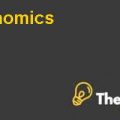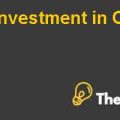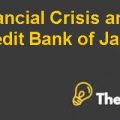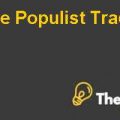Lula Administration Economically and Politically
Lula da Silva government remains from 2003 until 2010. In the tenure of the Lula, Brazil seeks significant growth in every part which helps the country to improve its economy and becoming the most attractive and favorable economy for the foreign investors.
Lula government introduces many programs in order to deal with the most debatable issues like poverty, education and inequality of the income. Under these programs several steps being taken by the current ruling government which generates drastic results. It helps to decrease in the percentage of poverty from 21% to 11% and increase in the percentage of middle class population with the same percentage.
It also helps to increase in the percentage of the primary school going children and adult literacy rate as compared to the other develop or under develop countries like China and India. The 20% percent of the population of the Brazil holds the more than 50% wealth of the country which is also greater than other develop countries but the Lula government attempts to reduce the inequality of wealth through certain packages and policies which generate positive results and decrease the inequality of wealth to some extent.
During the tenure of the Lula government overall real GDP of the country increases from 4.3 to 7.6 percent and also increases the GDP per capita growth from 3 percent to 6.6 percent which helps the Brazilian economy more suitable for the foreign investors and scud drastic changes in the reign of Lula increases the political image of the country also
Rising commodity Prices Beneficial to Brazil
During the Lula government Brazilian economy seeks significant growth and the real GDP of the country increase, increase in the domestic consumption, decrease in the poverty rate and increase in the literacy rate helps the government to achieve sustainable growth.
Increase in the domestic consumption and decrease in the poverty rate enables the users to spend more and better political environment triggers the exports of which ultimately exports of iron ore, oil and soybeans. Continuous growth in the Export of iron ore and soybeans makes the Brazil World’s largest exporter of iron ore and soybeans which ultimately creates a commodity boom in Brazil.
The exports of the Brazil raises from 70 billion R dollars to 132 billion R dollars helps the government GDP to increase and Brazil’s exports contribute more than 14% in the real GDP of the company. Increase in exports and mainly the increased demand of the iron ore and Brazilian soybeans increases the export prices.
Due to the effective and quality administration of the previous government reduces the inflation rate and it strengthen the Brazilian dollar against the worldwide traded US dollar. Strengthening of the Brazilian dollar, increase in the exports and export prices helps the Brazilian government to take advantage of the rise in the commodity prices and increase in the commodity prices of products like iron ore and soybeans helps greatly in becoming the leading economy in the word. Increase in the commodity prices and the demand of the Brazilian iron ore and soybean helps the Brazil by increasing the country’s foreign reserves and decrease in foreign debt.
Country’s most Serious Problems
Despite of the significant growth in the real GDP growth, decrease in poverty and inflation rate and increase in the percentage of school going children’s, Brazilian government is still facing the high cost structure problems. The cost in operating business in Brazil is expected to be high as compared to the other attractive market like China, India and Mexico.Brazil’s Enigma Sustaining Long-Term Growth Case Solution
The tax rates in Brazil are also high, in addition to this the documentation process of tax filling in the Brazil is also complicated and it is expected that over 2600 hours spent by a company in preparing and submitting tax fillings. Beside of increase in the literacy rate the Brazilian government is facing the problem of skill labor which is reducing the competitiveness of the Brazilian economy and market. In addition to the high cost structure, complex tax fillings procedure and complex regulatory procedures Brazil is also facing the problem of poor infrastructure which also results in the increase cost to investors............................
This is just a sample partial case solution. Please place the order on the website to order your own originally done case solution.













